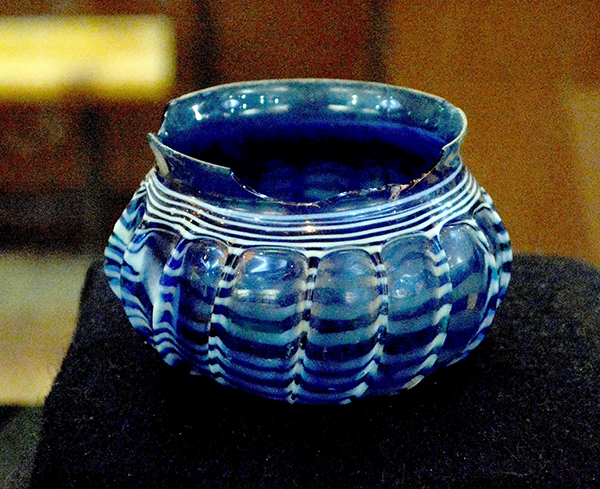This bowl is a fine example of pinched-glass craftmanship. It is of Roman (possibly Byzantine) origin and is believed to be dated to the 5th Century ACE (based on the age of the tomb which is from the Hunnu period.) It is also proof of the power of the Silk Road on both trade and politics, because it was found a few years back in the tomb of a Mongolian noble family. In Tuv province, not too far from modern Ulaanbaatar, the tomb of a wealthy, noble family yielded two similar bowls that were unfortunately broken. Also found in the same tomb was a jade seal of the Xiongnu Emperor.
Scientists are undecided as to how the bowl came to Mongolia. Some believe that it could have come through trade routes, and other believe that it was such a special object that it was probably a present from a Roman noble family to a Mongolian family in the Far East. The style of ribbed glass work was all the rage in Rome from the 1st C BCE to around the 1st C BCE, so it may have been a precious object of the Mongolian family for several centuries before it became part of their grave goods. It is difficult to know. Treasures tell no easy tales.
(Words by Laura Kelley. Photo of the Roman Bowl from the Mongolian Tomb borrowed from Ulaanbaatar Post.)

